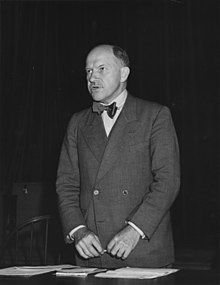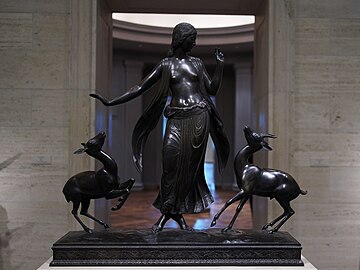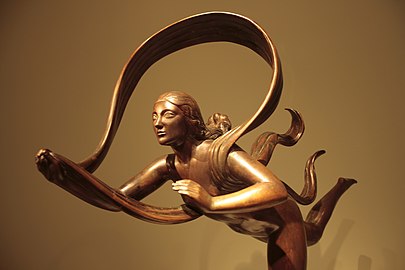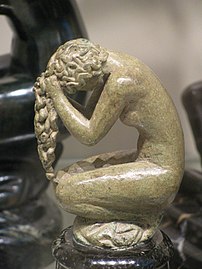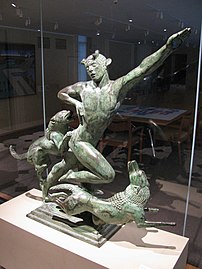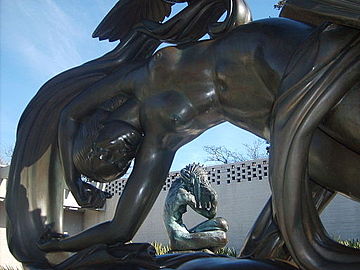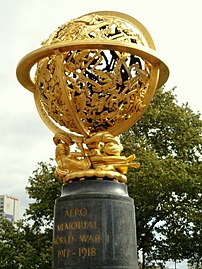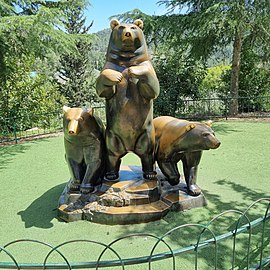
Adolph Alexander Weinman was a German-born American sculptor and architectural sculptor.

Carl Paul Jennewein was a German-born American sculptor.
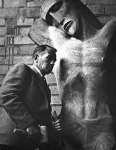
Albert Stewart was an American sculptor.

Robert Laurent was a French-American modernist figurative sculptor, printmaker and teacher. His work, the New York Times wrote,"figured in the development of an American sculptural art that balanced nature and abstraction." Widely exhibited, he took part in the Whitney's 1946 exhibition Pioneers of Modern Art. Credited as the first American sculptor to adopt a "direct carving" sculpting style that was bolder and more abstract than the then traditional fine arts practice, which relied on models, Laurent's approach was inspired by the African carving and European avant-garde art he admired, while also echoing folk styles found both in the U.S. and among medieval stone cutters of his native Brittany. Best known for his virtuoso mastery of the figure, Laurent sculpted in multiple media, including wood, alabaster, bronze, marble and aluminum. His expertise earned him major commissions for public sculpture, most famously for the Goose Girl for New York City's Radio City Music Hall, as well as for Spanning the Continent for Philadelphia's Fairmount Park. After the Depression, he was also the recipient of several Works Progress Administration (WPA) Federal Art Project commissions under the New Deal, including a bas-relief called Shipping for the exterior of Washington, D.C.'s Federal Trade Commission Building, commissioned by the Treasury Department's Section of Fine Arts in 1938.
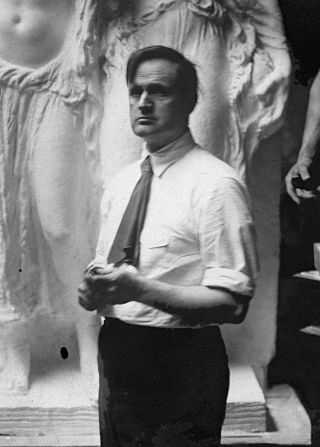
James Earle Fraser was an American sculptor during the first half of the 20th century. His work is integral to many of Washington, D.C.'s most iconic structures.

Isidore Konti was a Vienna-born sculptor. He began formal art studies at the age of 16 when he entered the Imperial Academy in Vienna, where he studied under Edmund von Hellmer. In 1886, he won a scholarship that allowed him to study in Rome for two years. While there he developed a love of Renaissance art that was to affect the nature of his mature sculpture. Upon returning to Austria, Konti worked as an architectural modeler.

Anna Vaughn Huntington was an American sculptor who was among New York City's most prominent sculptors in the early 20th century. At a time when very few women were successful artists, she had a thriving career. Hyatt Huntington exhibited often, traveled widely, received critical acclaim at home and abroad, and won multiple awards and commissions.

Attilio Piccirilli was an American sculptor. Born in Massa, Italy, he was educated at the Accademia di San Luca of Rome.
George Brant Bridgman was a Canadian-American painter, writer, and teacher in the fields of anatomy and figure drawing. Bridgman taught anatomy for artists at the Art Students League of New York for some 45 years.
Oronzio Maldarelli was an American sculptor and painter (1892–1963) born in Naples, Italy.

Brenda Putnam was an American sculptor, teacher and author.
The George D. Widener Memorial Gold Medal was a prestigious sculpture prize awarded by the Pennsylvania Academy of the Fine Arts from 1913 to 1968. Established in 1912, it recognized the "most meritorious work of Sculpture modeled by an American citizen and shown in the Annual Exhibition." PAFA's annual exhibitions were open to all American sculptors, but an individual could be awarded the medal only once. Sculptors Paul Manship, Albin Polasek, Malvina Hoffman, Carl Paul Jennewein, Anna Hyatt Huntington, William Zorach and Leonard Baskin were among its recipients.
Gaetano Cecere, was an American sculptor. He was born, educated and worked in New York City. He studied with Hermon A MacNeil, with work in the Museum of Modern Art in New York City, and Gaetano, known as "Guy," attended the Beaux-Arts Institute of Design and the National Academy of Design. In 1920 he won the Prix de Rome and studied at the American Academy in Rome for several years. During this period a "tendency to simplify forms for decorative effects was developed." Cecere has works and documents housed in many major museums and collections, including the Smithsonian Institution, the "National Collection of Fine Arts" and the Archives of American Art".
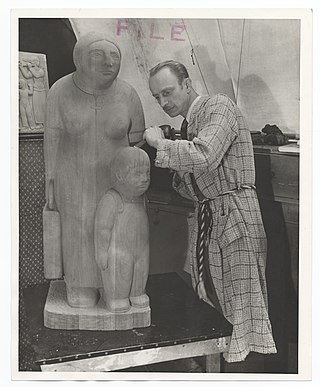
Thomas Gaetano LoMedico was an American sculptor and medalist. Born and raised in New York City, his sculpture won awards in the 1930s and 1940s and is now in several American museum collections.

Vincent Glinsky was an American sculptor. He is especially noted for his architectural decorations.
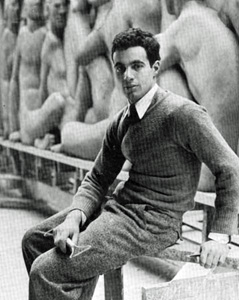
Robert Cronbach American sculptor and teacher, born in St. Louis, Missouri where he began his art studies. He is best remembered for his medals, architectural sculpture and other works. His art studies continued at the Pennsylvania Academy of Fine Art where he won two Cresson Traveling Scholarships and travelled to Europe in 1929 and 1930.

Cornelia Van Auken Chapin was an American sculptor and animalier born in Waterford, Connecticut. She was known for her stone models of birds and animals, which she largely carved directly from life and without preliminary models or sketches.

Beatrice Fenton was an American sculptor and educator born in Philadelphia, Pennsylvania. She is best known for her whimsical fountains. Her work was also part of the sculpture event in the art competition at the 1932 Summer Olympics.

Eric Gugler was an American Neoclassical architect, interior designer, sculptor and muralist. He was selected by President Franklin D. Roosevelt to design the Oval Office.

Bruno Mankowski, was a German-born American sculptor, carver, ceramicist and medalist.
